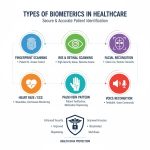Agricultural Microbials: Transforming Modern Farming Through Biological Innovation
Agricultural microbials represent a revolutionary shift in modern farming practices, offering sustainable solutions that enhance crop productivity while protecting environmental health. These beneficial microorganisms—including bacteria, fungi, and viruses—are transforming agriculture by improving soil fertility, promoting plant growth, and providing natural protection against pests and diseases. As the global agricultural industry seeks alternatives to chemical-intensive farming methods, microbials have emerged as a cornerstone of sustainable agriculture, driving both environmental stewardship and economic viability for farmers worldwide.
Key Takeaways
- Agricultural microbials market is experiencing unprecedented growth, projected to reach USD 33.21 billion by 2035.
- Sustainable farming practices and organic food demand are primary market drivers.
- Storage and shelf-life challenges remain significant barriers to widespread adoption.
- Government initiatives and subsidies create substantial growth opportunities.
- Bacterial formulations dominate the market, with liquid applications showing superior efficacy.
- North America leads market share, while Asia-Pacific shows fastest growth potential.
- Strategic partnerships and technological innovations are reshaping the competitive landscape.
- Future trends point toward integration with precision agriculture and digital farming technologies.
Market Overview and Projections
The Agricultural Microbials Market has entered a period of explosive growth, reflecting the industry’s fundamental shift toward sustainable farming practices. Currently valued at USD 7.32 billion in 2024, the market demonstrates remarkable momentum with projections indicating growth to USD 33.21 billion by 2035, representing a compound annual growth rate of 14.90%. This extraordinary expansion reflects not merely market trends but a fundamental transformation in how global agriculture approaches crop production and environmental stewardship.
Several factors contribute to this robust market performance. The increasing global population, expected to reach nearly 10 billion by 2050, creates unprecedented demand for food production efficiency. Simultaneously, agricultural lands face mounting pressure from climate change, soil degradation, and water scarcity, making traditional farming methods increasingly unsustainable. Agricultural microbials address these challenges by enhancing crop yields while reducing dependence on synthetic chemicals, creating a compelling value proposition for farmers seeking both profitability and sustainability.
The market’s growth trajectory is further supported by technological advancements in microbial research and formulation. Modern biotechnology enables the development of more effective microbial strains with enhanced stability and broader application ranges. These innovations have expanded the practical applications of agricultural microbials beyond traditional bio-fertilizers to include sophisticated bio-pesticides and plant growth promoters that can be precisely targeted to specific crops and growing conditions.
To Know More, a detailed Agricultural Microbials Market analysis of Market Trends, Dynamics, and Competitive Strategies – View Sample PDF
Investment patterns reveal strong confidence in the sector’s future, with venture capital and private equity firms increasingly funding agricultural microbial companies. Government agencies worldwide are also recognizing the strategic importance of biological agriculture, implementing policies that encourage research, development, and adoption of microbial technologies. This convergence of private investment and public support creates a favorable environment for sustained market growth and innovation.
Key Market Drivers
The rise of sustainable agricultural practices serves as the primary catalyst driving agricultural microbials market expansion. Modern consumers increasingly demand food products that are produced using environmentally responsible methods, creating market pressure for farmers to adopt sustainable practices. Agricultural microbials perfectly align with these expectations by offering effective alternatives to synthetic chemicals while maintaining or improving crop performance. This alignment between consumer preferences and farming practices creates a powerful market driver that continues to strengthen as environmental awareness grows.
Consumer preference for organic products has evolved from a niche market segment to a mainstream demand that influences agricultural practices globally. Organic food sales have consistently outpaced conventional food sales growth, with many consumers willing to pay premium prices for products they perceive as healthier and more environmentally friendly. Agricultural microbials play a crucial role in organic farming systems by providing natural solutions for plant nutrition and pest management that comply with organic certification standards.
Government initiatives and development policies represent another significant market driver, as policymakers worldwide recognize the strategic importance of sustainable agriculture for food security and environmental protection. Many countries have implemented regulatory frameworks that encourage biological agriculture through subsidies, tax incentives, and research funding. These policies create favorable economic conditions for farmers to adopt microbial technologies while simultaneously supporting the development of innovative products and applications.
The growing awareness of environmental issues associated with conventional agriculture has also contributed to market growth. Concerns about soil health degradation, water contamination from chemical runoff, and the development of pesticide-resistant pests have prompted both farmers and consumers to seek alternative solutions. Agricultural microbials address these concerns by working with natural biological processes rather than disrupting them, offering a path toward more resilient and sustainable agricultural systems that can maintain productivity while protecting environmental resources.
Challenges in the Agricultural Microbials Market
The short shelf life of microbial products presents one of the most significant challenges facing the agricultural microbials market. Unlike synthetic chemicals that can remain stable for years, living microorganisms are inherently perishable and require careful handling throughout the supply chain. Most microbial products maintain optimal efficacy for only 12-24 months under ideal storage conditions, and this timeframe can be drastically reduced if products are exposed to temperature fluctuations, moisture, or other environmental stresses. This limitation creates logistical challenges for manufacturers, distributors, and farmers, requiring sophisticated cold chain management systems that increase costs and complexity throughout the distribution network.
Complex storage requirements further compound the shelf-life challenge, as microbial products often require specific temperature, humidity, and light conditions to maintain viability. Many products must be stored in refrigerated conditions, which is particularly challenging in developing countries where reliable cold storage infrastructure may be limited. These storage requirements also create additional costs for retailers and farmers, who must invest in appropriate storage facilities and monitor conditions carefully to ensure product effectiveness.
Limited awareness among farmers represents another substantial barrier to market growth. Despite growing interest in sustainable agriculture, many farmers lack comprehensive understanding of how microbial products work, when to apply them, and how to integrate them effectively into existing farming systems. This knowledge gap is particularly pronounced among smallholder farmers in developing countries, who may have limited access to agricultural extension services or technical support. The complex nature of biological systems makes it challenging to provide simple, universal application guidelines, as optimal use of microbial products often depends on specific soil conditions, crop varieties, and local environmental factors.
Regulatory challenges also pose significant obstacles, as the approval processes for microbial products can be lengthy and expensive. Unlike synthetic chemicals, which have established regulatory pathways, microbial products often require specialized testing protocols and safety assessments that can take years to complete. These regulatory requirements vary significantly between countries, creating additional complexity for companies seeking to market their products internationally. The cost and time associated with regulatory approval can be particularly challenging for smaller companies developing innovative microbial solutions.
Opportunities for Growth
Government support and subsidies create substantial opportunities for agricultural microbials market expansion. Many governments worldwide are implementing policies that specifically encourage the adoption of biological agriculture technologies through financial incentives, research funding, and regulatory support. These initiatives not only reduce the financial barriers for farmers adopting microbial technologies but also signal long-term policy commitment to sustainable agriculture. In countries like India, Brazil, and several European nations, government programs provide direct subsidies for biological inputs, making them more cost-competitive with conventional chemicals and accelerating market adoption.
The European Union’s Green Deal and Farm to Fork Strategy exemplify how policy frameworks can create substantial market opportunities. These initiatives set ambitious targets for reducing chemical pesticide use while increasing organic farming acreage, creating a regulatory environment that strongly favors biological solutions. Similar policy frameworks are emerging globally, as governments recognize the strategic importance of sustainable agriculture for addressing climate change, food security, and environmental protection.
Innovations in microbial formulations represent another significant growth opportunity, as advances in biotechnology continue to overcome traditional limitations of biological products. New encapsulation technologies are extending shelf life and improving stability, while genetic engineering techniques are creating more effective microbial strains with enhanced performance characteristics. These innovations are expanding the potential applications of agricultural microbials and making them more practical for commercial farming operations.
Precision agriculture and digital farming technologies create new opportunities for targeted microbial applications. Advanced sensors, satellite imagery, and data analytics enable farmers to identify specific field conditions that would benefit from microbial treatments, allowing for more precise and effective applications. This technological integration not only improves the performance of microbial products but also provides farmers with better tools for monitoring and measuring their effectiveness.
The increasing global trend toward organic farming presents substantial long-term growth opportunities. As consumer demand for organic products continues to grow, more farmers are transitioning to organic production systems that rely heavily on biological inputs. This transition creates a stable and growing market for agricultural microbials, as these products are essential components of organic farming systems that cannot rely on synthetic chemicals for plant nutrition and pest management.
Product Segmentation Insights
Bacterial formulations dominate the agricultural microbials market, accounting for the largest share of commercial products due to their versatility and effectiveness across a wide range of applications. Nitrogen-fixing bacteria such as Rhizobium species have established themselves as essential components of legume production systems, while plant growth-promoting bacteria like Bacillus and Pseudomonas species demonstrate broad-spectrum benefits across multiple crop types. These bacterial products excel in their ability to improve nutrient availability, enhance plant resistance to environmental stresses, and promote root development, making them attractive to farmers seeking reliable biological solutions.
The dominance of bacterial products also reflects their relative ease of production and formulation compared to other microbial types. Bacterial cultures can be grown in controlled fermentation systems and formulated into stable products that maintain viability during storage and application. Many bacterial species also demonstrate natural resistance to environmental stresses, making them more reliable for field applications where conditions may not be optimal.
Fungal products represent the second-largest segment, with mycorrhizal fungi and biocontrol fungi gaining increasing recognition for their specialized applications. Mycorrhizal fungi form symbiotic relationships with plant roots, dramatically improving nutrient and water uptake while enhancing plant resilience to environmental stresses. These fungi are particularly valuable in sustainable agriculture systems where soil health improvement is a primary objective. Biocontrol fungi such as Trichoderma species provide effective alternatives to synthetic fungicides, offering natural protection against soil-borne plant diseases.
Viral products, while representing a smaller market segment, show significant potential for specialized applications, particularly in integrated pest management systems. Entomopathogenic viruses provide highly specific control of insect pests without affecting beneficial organisms, making them valuable tools for sustainable pest management. The specificity of viral products, while limiting their broad-market appeal, creates opportunities for targeted solutions in specific crop-pest combinations.
The liquid versus dry formulation debate continues to shape product development strategies. Liquid formulations generally provide superior microbial survival and easier application, leading to better field performance and farmer satisfaction. However, dry formulations offer advantages in terms of storage stability, shipping costs, and shelf life, making them more practical for certain market segments and geographic regions where cold chain infrastructure is limited.
Application Methods and Efficacy
Foliar spray applications have emerged as one of the most effective methods for delivering agricultural microbials, offering several advantages that make them particularly attractive to farmers seeking reliable biological solutions. When applied as foliar sprays, microbial products can be rapidly absorbed by plant tissues, providing immediate benefits such as enhanced nutrient uptake, improved disease resistance, and stress tolerance. This application method allows for precise timing and targeting, enabling farmers to apply microbials when plants are most receptive or when specific challenges arise.
The effectiveness of foliar applications is particularly notable in crops with extensive leaf surfaces, such as vegetables, fruits, and ornamental plants. Research demonstrates that foliar-applied plant growth-promoting bacteria can increase crop yields by 15-25% compared to untreated controls, while also improving fruit quality and extending shelf life. The direct contact between microorganisms and plant tissues in foliar applications creates optimal conditions for beneficial interactions, leading to enhanced plant performance and resilience.
Soil treatment applications represent another crucial application method, particularly for long-term soil health improvement and crop production systems. When applied to soil, microbial products can establish persistent populations that continue to benefit crops throughout the growing season and potentially beyond. Soil-applied microorganisms contribute to improved soil structure, enhanced nutrient cycling, and the development of beneficial microbial communities that support plant health and productivity.
The effectiveness of soil applications is particularly evident in perennial crops and long-term cropping systems where soil health improvement is a primary objective. Mycorrhizal fungi applied to soil can establish symbiotic relationships with plant roots that persist for multiple growing seasons, providing ongoing benefits in terms of nutrient and water uptake efficiency. Similarly, soil-applied beneficial bacteria can improve soil fertility and plant health while contributing to the development of disease-suppressive soil environments.
Seed treatment applications offer unique advantages by providing early protection and growth promotion when plants are most vulnerable. By inoculating seeds with beneficial microorganisms before planting, farmers can ensure that plants have access to microbial benefits from the earliest stages of growth. This approach is particularly effective for crops that benefit from specific microbial partnerships, such as legumes that require nitrogen-fixing bacteria or crops that benefit from early mycorrhizal colonization.
Regional Market Dynamics
North America maintains its position as the dominant market for agricultural microbials, driven by advanced agricultural infrastructure, strong research and development capabilities, and progressive regulatory frameworks that support biological agriculture. The United States leads this regional dominance, with a market value exceeding USD 2.5 billion in 2024, supported by extensive adoption among large-scale farming operations and robust investment in agricultural biotechnology. American farmers have demonstrated strong acceptance of microbial technologies, particularly in high-value crops such as fruits, vegetables, and specialty grains where the premium pricing justifies the additional input costs.
The North American market benefits from well-established distribution networks, comprehensive technical support systems, and strong collaboration between research institutions and commercial companies. Major agricultural universities and research centers throughout the region continue to advance microbial research and development, creating a pipeline of innovative products and applications that maintain market leadership. Additionally, the region’s advanced cold chain infrastructure supports the distribution of temperature-sensitive microbial products, enabling broader market penetration and farmer adoption.
The Asia-Pacific region represents the fastest-growing market for agricultural microbials, with compound annual growth rates exceeding 18% in several countries. This rapid growth reflects the region’s large agricultural sector, increasing awareness of sustainable farming practices, and growing consumer demand for organic products. Countries such as India, China, and Australia are leading this regional expansion, with government policies increasingly supporting biological agriculture through subsidies, research funding, and regulatory reforms.
India’s agricultural microbials market is particularly noteworthy, driven by the world’s second-largest agricultural sector and government initiatives promoting sustainable farming practices. The Indian government’s focus on doubling farmer incomes while reducing chemical inputs has created favorable conditions for microbial adoption. Similarly, China’s commitment to sustainable agriculture and food safety has led to increased investment in biological agriculture technologies and growing market demand for microbial products.
European market dynamics are shaped by stringent environmental regulations and strong consumer preferences for sustainable agriculture. The European Union’s Green Deal and associated agricultural policies create a regulatory environment that strongly favors biological solutions over conventional chemicals. This regulatory framework, combined with consumer willingness to pay premium prices for sustainably produced food, creates a robust market for high-quality microbial products.
Competitive Landscape
The agricultural microbials market features a diverse competitive landscape characterized by a mix of established multinational corporations, specialized biotechnology companies, and emerging startups, each bringing unique strengths and capabilities to the sector. Major players such as Bayer CropScience, BASF, and Syngenta have established significant market presence through strategic acquisitions of biotechnology companies and substantial investments in research and development. These large corporations leverage their extensive distribution networks, regulatory expertise, and financial resources to bring microbial products to global markets efficiently.
Bayer CropScience’s acquisition of multiple biocontrol companies, including AgraQuest and Prophyta, demonstrates the strategic importance that major agricultural companies place on biological solutions. These acquisitions have enabled Bayer to develop comprehensive portfolios of microbial products that complement their existing chemical offerings, providing farmers with integrated solutions that combine the benefits of both biological and conventional technologies.
Specialized biotechnology companies such as Novozymes, Marrone Bio Innovations, and AgBiome have carved out significant market positions by focusing exclusively on biological solutions and developing deep expertise in microbial technologies. These companies often lead innovation in the sector, developing novel microbial strains and formulation technologies that larger companies subsequently license or acquire. Their specialized focus allows them to move quickly in developing new products and responding to emerging market needs.
Strategic mergers and acquisitions continue to reshape the competitive landscape as companies seek to strengthen their biological portfolios and expand market reach. Recent notable transactions include FMC Corporation’s acquisition of several biocontrol companies and Corteva’s investments in biological agriculture technologies. These consolidation activities reflect the industry’s recognition that biological solutions will play an increasingly important role in future agricultural systems.
Emerging companies and startups are driving innovation through novel approaches to microbial discovery, formulation, and application. Companies such as Pivot Bio, which has developed nitrogen-fixing bacteria for cereal crops, and Indigo Agriculture, which focuses on seed-applied microbials, represent new approaches to addressing traditional agricultural challenges. These companies often leverage advanced technologies such as artificial intelligence, genomics, and precision agriculture to develop more effective and targeted microbial solutions.
Future Trends and Innovations
The integration of agricultural microbials with precision agriculture technologies represents one of the most significant trends shaping the industry’s future. Advanced sensor networks, satellite imagery, and data analytics are enabling farmers to identify specific field conditions that would benefit from targeted microbial applications, moving beyond broad-acre treatments to precision delivery systems that optimize both effectiveness and cost-efficiency. This technological convergence allows for real-time monitoring of soil conditions, plant health, and environmental factors that influence microbial performance, enabling data-driven decisions about when, where, and how to apply biological products.
Artificial intelligence and machine learning are revolutionizing microbial discovery and development processes, accelerating the identification of beneficial microorganisms and optimizing their formulation for specific applications. These technologies enable researchers to analyze vast datasets of microbial interactions, environmental conditions, and crop responses to identify the most promising combinations for commercial development. Companies are increasingly using AI-driven approaches to screen thousands of microbial strains simultaneously, reducing the time and cost required to bring new products to market.
The development of consortium-based products, which combine multiple complementary microorganisms in single formulations, represents another important innovation trend. These products leverage the synergistic effects of different microbial species to provide broader spectrum benefits than single-organism products. For example, combining nitrogen-fixing bacteria with mycorrhizal fungi and plant growth-promoting bacteria can address multiple plant needs simultaneously, providing more comprehensive solutions that appeal to farmers seeking to simplify their input strategies.
Advances in formulation technology are addressing traditional limitations of microbial products, particularly regarding shelf life and stability. New encapsulation methods, including microencapsulation and nanoencapsulation technologies, are protecting microbial cells from environmental stresses while enabling controlled release mechanisms that optimize their effectiveness in field conditions. These innovations are making microbial products more practical for commercial agriculture by reducing storage requirements and improving field performance consistency.
The future of agricultural microbials is increasingly linked to broader sustainability objectives and climate change mitigation strategies. As governments and consumers place greater emphasis on reducing agriculture’s environmental footprint, microbial technologies offer pathways to achieve these goals while maintaining crop productivity. Carbon sequestration, reduced greenhouse gas emissions, and improved soil health are becoming important value propositions that extend beyond traditional crop production benefits, creating new market opportunities and applications for microbial technologies.
FAQs
- What are agricultural microbials and how do they benefit farming?
- What is the current market value of agricultural microbials and what are the projections for the future?
- How do agricultural microbials contribute to sustainable farming practices?
- What types of microorganisms are classified under agricultural microbials?
![[Market Research Reports] – Research Google News Blog | VMR.Biz](https://www.vmr.biz/wp-content/uploads/2022/12/logo-removebg-preview.png)











